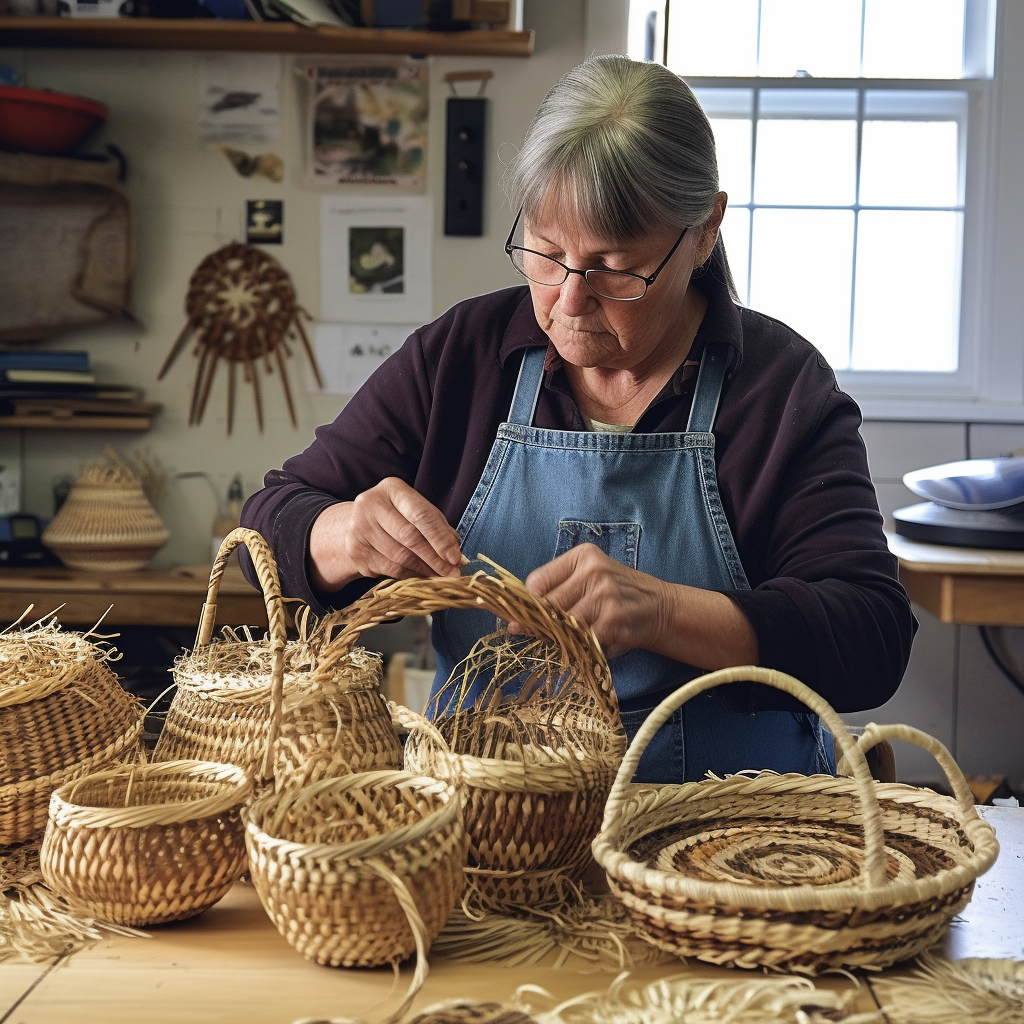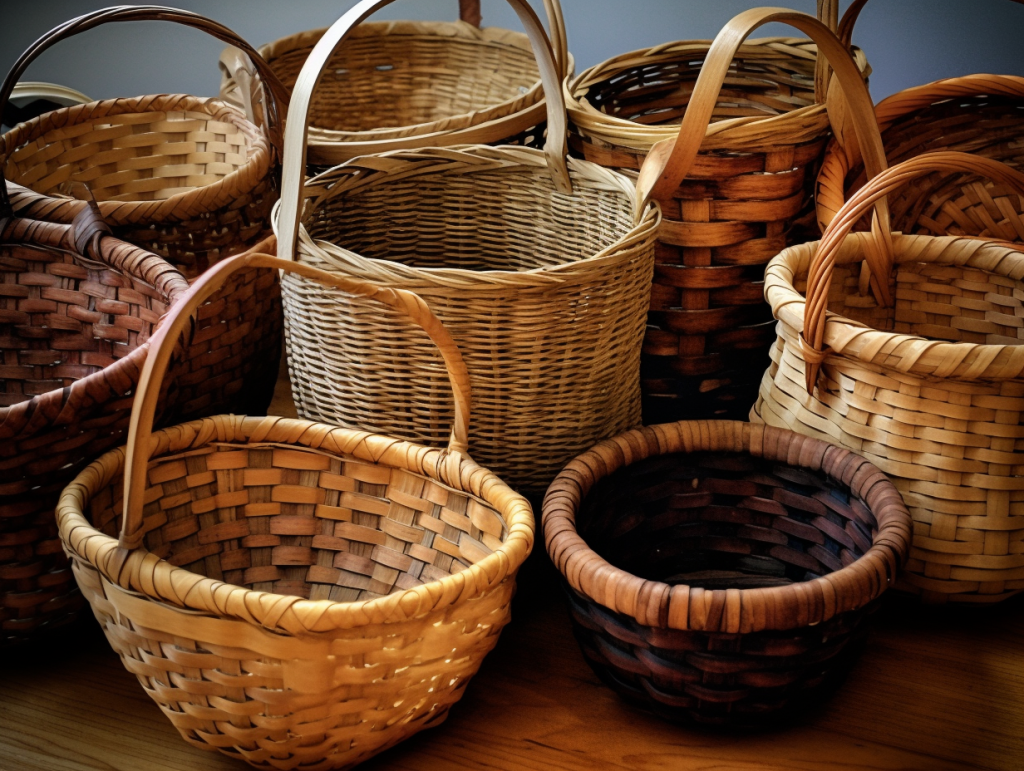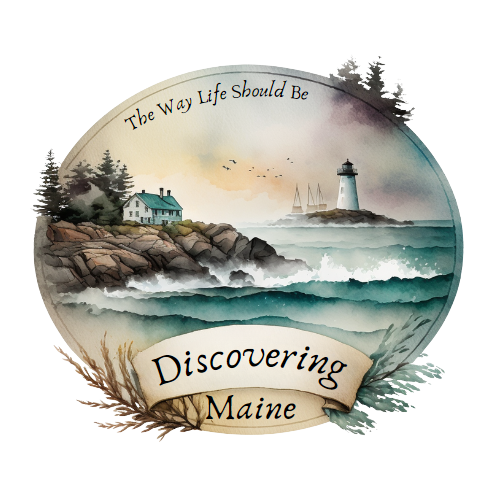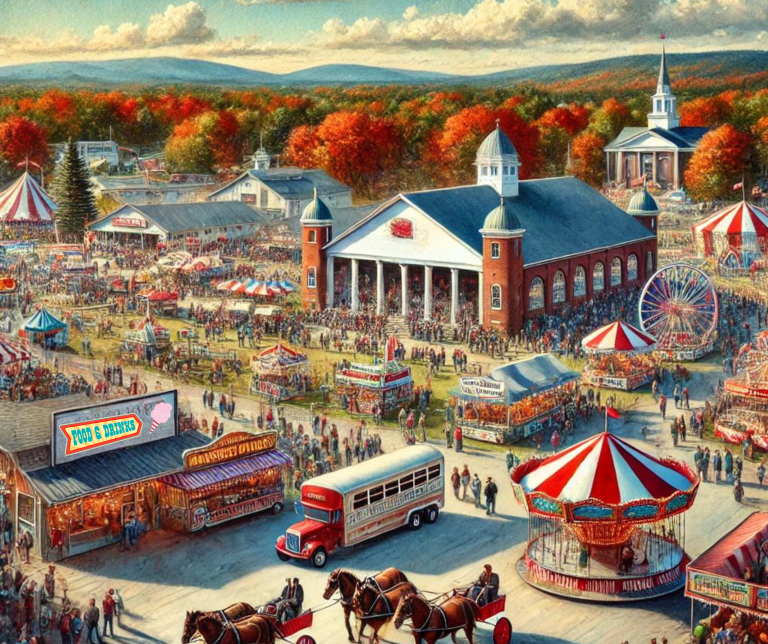
Introduction to the Art of Basketry in Maine
Introduction to the Art of Basketry in Maine
As a Mainer, I take great pride in the rich cultural heritage of our state. One of the traditional crafts that holds a special place in Maine’s history is basketry. The art of basket weaving has been passed down through generations, showcasing our deep connection to nature and our resourceful spirit.
Basketry is more than just a craft; it is a way of life. From the early days of Native American tribes to the present, baskets have played an essential role in our daily lives, serving both practical and ceremonial purposes. The artistry and skill that go into crafting each basket are a testament to the ingenuity and creativity of Maine’s artisans.
In our beautiful state, basket weavers utilize a variety of natural fibers, such as ash, sweetgrass, and birch bark. These materials are sustainably harvested, respecting the balance of our natural environment. The process of weaving requires meticulous attention to detail, as each strand is carefully intertwined to create intricate patterns and sturdy structures.
The craft of basketry in Maine holds a significant cultural significance. It is not only a means of artistic expression but also a way of preserving heritage and passing down ancestral knowledge. The patterns, designs, and techniques used in basket weaving tell stories of ancestors, traditions, and a close relationship with nature.
As I explore the world of basketry, I am captivated by the diversity of baskets crafted in Maine. From functional market baskets that carry fresh produce from our local farms to storage baskets that keep our homes organized, each basket serves a purpose. Additionally, decorative baskets showcase the talent and creativity of our artisans, transforming natural fibers into works of art.
In the upcoming sections, we will delve deeper into the cultural significance of basket weaving in Maine. We will shine a spotlight on skilled basket weavers and their distinctive styles, showcasing their contributions to preserving this ancient craft. Furthermore, we will explore the sustainable aspect of using natural fibers in basketry, highlighting our commitment to responsible practices and environmental stewardship.
Join me as we embark on this journey into the world of basketry in Maine, celebrating the artistry, cultural heritage, and sustainable traditions that make it a cherished part of our state’s identity.
The Cultural Significance of Basket Weaving in Maine
Basket weaving holds deep cultural significance in Maine, intertwining the stories of Native American traditions and the broader fabric of our state’s heritage. For centuries, baskets have played an integral role in the daily lives, ceremonies, and storytelling of Maine’s indigenous communities.
In Native American cultures, basketry is not just a practical skill; it is a sacred art form that carries the spirit and wisdom of the weaver. Each basket tells a story, representing the connection between the weaver, the natural materials used, and the purpose it serves. From the Passamaquoddy and Penobscot tribes to the Micmac and Maliseet peoples, basket weaving has been woven into the very fabric of their cultural identity.
Baskets have been crafted for various purposes within Native American communities. Traditionally, they have been used for gathering wild plants, storing food, carrying belongings, and even as fishing traps. The designs and motifs woven into these baskets often reflect the stories, symbols, and beliefs passed down through generations.
Beyond their functional uses, baskets also hold immense ceremonial significance. They are woven with intention, carrying prayers, blessings, and offerings during sacred ceremonies and rituals. Baskets serve as vessels of cultural knowledge, connecting individuals to their ancestors and their spiritual traditions.
In Maine, the legacy of Native American basketry continues to thrive. Many Native artisans, who have inherited the ancient techniques from their ancestors, create breathtaking pieces that honor their cultural heritage. These artisans meticulously weave patterns, incorporating traditional symbols and designs, keeping the legacy alive for future generations.
As non-Native Mainers, it is important for us to acknowledge and respect the cultural significance of basket weaving. By supporting Native artisans and learning about their traditions, we can foster a deeper appreciation for their contributions to our state’s cultural tapestry.
In the next section, we will explore the diverse array of basket types found in Maine. From functional baskets that support our daily activities to decorative masterpieces that captivate our imagination, these baskets showcase the skill, artistry, and cultural legacy of Maine’s basket weavers.
Showcasing Different Types of Baskets and Their Uses
Maine is home to a captivating array of baskets, each crafted with precision and artistry. These baskets serve a multitude of purposes, both functional and decorative, reflecting the skill and creativity of our talented basket weavers.
Functional baskets are designed to meet the practical needs of everyday life. Market baskets, woven with sturdy handles and ample space, are perfect companions for trips to the local farmers’ markets, allowing us to carry fresh produce and artisanal goods in style. Storage baskets, intricately woven and versatile in size and shape, help us organize our homes while adding a touch of natural beauty to our living spaces. Fishing baskets, with their intricate net-like designs, are reminders of our deep connection to Maine’s abundant waterways and the traditional practices that sustainably support our fishing communities.

Beyond their utilitarian functions, decorative baskets are true works of art that showcase the mastery of Maine’s basket weavers. These baskets mesmerize with their intricate patterns, vibrant colors, and innovative designs. Woven art pieces, often exhibited in galleries and museums, elevate basketry to a form of fine art, pushing the boundaries of traditional techniques and materials. These creations are expressions of the weaver’s imagination, capturing the essence of Maine’s natural landscapes, wildlife, and cultural narratives.
One remarkable aspect of Maine’s basketry tradition is the adaptability and versatility of the materials used. Basket weavers harness the abundant resources available in our state’s diverse ecosystems. Sweetgrass, with its distinctive fragrance, adds a touch of elegance to baskets, while ash splints and birch bark provide strength and durability. Each natural fiber is carefully selected and prepared, ensuring the highest quality and honoring the sustainable practices that have been passed down through generations.
As we explore the world of Maine’s basketry, we come to appreciate the intricate craftsmanship and attention to detail that goes into creating these functional and decorative treasures. The diverse range of basket types and their uses reflect the artistry, ingenuity, and resourcefulness of our skilled basket weavers.
In the next section, we will shine a spotlight on the talented basket weavers of Maine, celebrating their distinctive styles and the contributions they make to preserving this ancient craft. Join us as we delve into the stories behind these artisans and their exceptional creations.
Highlighting Skilled Basket Weavers and Their Distinctive Styles
Maine is home to a community of highly skilled basket weavers, each with their own distinctive style and creative approach. These artisans bring passion, dedication, and a deep connection to their craft, contributing to the preservation and evolution of basketry traditions in our state.
One such talented weaver is Stephen Zeh, known for his exquisite market baskets. His baskets are meticulously woven with brown ash splints, creating a harmonious blend of strength and beauty. The attention to detail in his work is evident in the precise weaving patterns and the flawless finishes.
Another remarkable weaver, Dot Hutchins (Baskets by Dot), specializes in decorative baskets that push the boundaries of traditional techniques. Her artistic vision is reflected in the innovative use of materials, incorporating elements such as clay bases and handles, driftwood, stains & dyes, or even wood planks into her designs. Her baskets are a fusion of traditional basketry and contemporary aesthetics, capturing the essence of Maine’s landscapes and cultural heritage.

Behold this captivating basket, a true marvel in design. Its exquisite tulips adorning the sides elevate its appeal, making it a remarkable addition to any basket collection. From the talented hands of Dot from Baskets by Dot. An enchanting addition to any basket collection, this masterpiece seamlessly combines artistry and functionality. With dimensions measuring approximately 12″ in diameter by 8″, Dot’s creation promises to captivate both your eyes and your practical needs.
Bill Mackowski is renowned for his fishing creel baskets, they are truly a testament to his mastery of the craft. Their intricate designs not only demonstrate technical skill but also serve as a homage to Maine’s rich maritime heritage. Each fishing basket is woven with precision, ensuring its functionality while retaining the beauty and grace that comes from years of experience and a deep connection to nature and the sea.
The diversity of styles and techniques employed by these skilled basket weavers enriches the basketry tradition in Maine. From traditional patterns to innovative designs, they push the boundaries of what is possible with natural fibers. Through their dedication and creativity, they inspire both seasoned weavers and aspiring artisans, keeping the craft alive and evolving.
It is through the efforts and contributions of these skilled basket weavers that Maine’s basketry traditions continue to thrive. Their distinctive styles and remarkable craftsmanship not only preserve our cultural heritage but also contribute to the dynamic and ever-evolving world of contemporary basketry.
In the next section, we will explore the sustainable aspect of using natural fibers in basketry, highlighting the deep-rooted connection between basket weaving and our commitment to responsible practices and environmental stewardship. Join us as we delve into the sustainable journey of Maine’s basket weavers and their dedication to preserving our natural resources.
Exploring the Sustainable Aspect of Using Natural Fibers in Basketry
Basket weaving in Maine has a deep-rooted connection to sustainability and environmental stewardship. The use of natural fibers in basketry reflects our commitment to responsible practices, preserving our natural resources, and honoring the delicate balance of our ecosystems.
The materials used in basketry, such as ash splints, sweetgrass, and birch bark, are carefully and sustainably harvested. Basket weavers have a profound respect for the environment, ensuring that their sourcing practices do not deplete or harm the plant species they rely on. They understand the importance of maintaining healthy ecosystems, as these ecosystems provide the very materials that bring their baskets to life.
The sustainable journey of a basket starts with the careful selection of materials. Ash trees, for example, are selectively harvested, ensuring the long-term health and vitality of the forests. The bark is peeled in a way that allows the tree to regenerate and continue thriving. Sweetgrass, an iconic component of Maine’s basketry, is sustainably gathered, respecting the growth patterns of the plant and preserving its natural habitat.
Basket weavers also embrace the concept of waste reduction and recycling. They often repurpose materials, finding creative ways to incorporate recycled elements into their designs. Whether it’s using salvaged ribbons or repurposing old fabric strips, these weavers showcase their resourcefulness while reducing their environmental footprint.
In addition to sustainable sourcing, basket weavers take great care to utilize every part of the plant materials they gather. Scraps and trimmings are often transformed into smaller woven items or used as natural dyes, minimizing waste and maximizing the potential of each harvested fiber.
By employing sustainable practices, basket weavers contribute to the preservation of our natural environment and demonstrate their commitment to ensuring a sustainable future. Through their work, they inspire others to appreciate and value the beauty and functionality of handmade, eco-friendly products.
As consumers, we have the opportunity to support these sustainable practices by choosing locally crafted baskets made from natural fibers. By purchasing from local artisans, we not only support their livelihoods but also contribute to the preservation of traditional skills and the continuation of sustainable practices.
So as you can see crafting with natural fibers has been an integral part of Maine’s cultural heritage, with basketry standing as a shining example of the artistry and resourcefulness of our skilled artisans. Through the centuries, the craft of basket weaving has not only provided functional tools for everyday life but also served as a means of cultural expression, storytelling, and connection to our natural surroundings.
As we celebrate the artistry, cultural heritage, and sustainable traditions of basketry in Maine, we invite you to support our local artisans and embrace the beauty and functionality of handmade, eco-friendly products. By choosing locally crafted baskets, we not only bring a piece of Maine’s rich heritage into our lives but also contribute to the preservation of traditional skills and sustainable practices. Join us as we celebrate the artistry, heritage, and commitment to sustainability that define Maine’s basket weaving community, and make it a cherished part of Maine’s identity. From the intricately woven patterns to the sustainable materials used, basketry in Maine embodies the spirit of creativity, heritage, and environmental stewardship. Let us continue to honor and preserve this timeless craft for generations to come.


